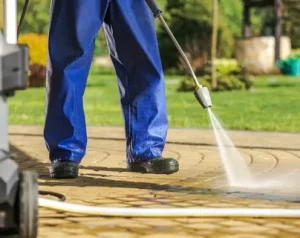Table of Contents
ToggleWhy Goat Milk?
Goat milk is renowned for its moisturizing and soothing properties, making it an excellent choice for soap making. Rich in vitamins, minerals, and proteins, goat milk helps to hydrate the skin, reduce inflammation, and promote a healthy complexion. Its natural lactic acid content gently exfoliates, leaving the skin soft and radiant. Incorporating goat milk into your soap recipes adds a touch of luxury and indulgence to your skincare routine.
Ingredients:
To make goat milk soap at home, you’ll need a few key ingredients:
- Goat Milk: Fresh or powdered goat milk can be used in soap making. Fresh goat milk provides the most benefits, but powdered goat milk is convenient and has a longer shelf life.
- Oils: Choose high-quality oils such as olive oil, coconut oil, and shea butter to nourish and moisturize the skin.
- Lye: Lye, also known as sodium hydroxide, is essential for saponification—the process of turning oils into soap. Ensure you handle lye with care and follow safety precautions.
- Essential Oils or Fragrance: Add your favorite essential oils or fragrance oils to scent your soap and enhance its therapeutic properties.
- Additives: Optional additives such as herbs, spices, or exfoliants can be incorporated for additional benefits and texture.
Equipment:
Gather the following equipment before you begin:
- Heat-resistant containers for mixing oils and lye.
- Thermometer to monitor temperatures.
- Immersion blender for mixing.
- Soap molds to shape your soap.
- Protective gear including gloves, goggles, and long sleeves to handle lye safely.
Step-by-Step Instructions:
- Prepare the Goat Milk: If using fresh goat milk, freeze it in ice cube trays beforehand to prevent it from scorching when mixed with lye. If using powdered goat milk, reconstitute it according to package instructions.
- Measure Ingredients: Weigh out the oils and goat milk, and carefully measure the lye according to your recipe. Ensure accuracy for a successful soap batch.
- Safety Precautions: Put on protective gear and work in a well-ventilated area when handling lye. Avoid inhaling its fumes and prevent skin or eye contact.
- Mix Lye Solution: Slowly add the lye to the goat milk while stirring gently until fully dissolved. Be cautious as the mixture will release heat and may produce fumes.
- Heat Oils: Melt the oils in a heat-resistant container until they reach the desired temperature. Aim for a similar temperature as the lye solution.
- Combine Ingredients: Carefully pour the lye solution into the melted oils and blend using an immersion blender until the mixture reaches trace—a thick, pudding-like consistency.
- Add Fragrance and Additives: Stir in your chosen essential oils or fragrance, along with any desired additives such as herbs or exfoliants.
- Pour into Molds: Transfer the soap mixture into soap molds, tapping gently to release any air bubbles. Smooth the surface with a spatula if necessary.
- Cure the Soap: Allow the soap to cure in the molds for 24-48 hours. Once firm, unmold and cut into bars. Place the bars on a rack in a cool, dry place to cure for 4-6 weeks, allowing them to harden and develop their full lather and scent.
- Enjoy: Once cured, your homemade goat milk soap is ready to use! Indulge in its creamy lather and nourishing properties for a luxurious bathing experience.
Conclusion:
Making goat milk soap at home is a rewarding and enjoyable process that allows you to create personalized skincare products tailored to your preferences. With the right ingredients, equipment, and techniques, you can craft luxurious bars of soap that nourish and pamper your skin. Whether you’re a seasoned soap maker or trying it for the first time, follow this ultimate guide to embark on your goat milk soap-making journey and experience the natural beauty of homemade skincare.







